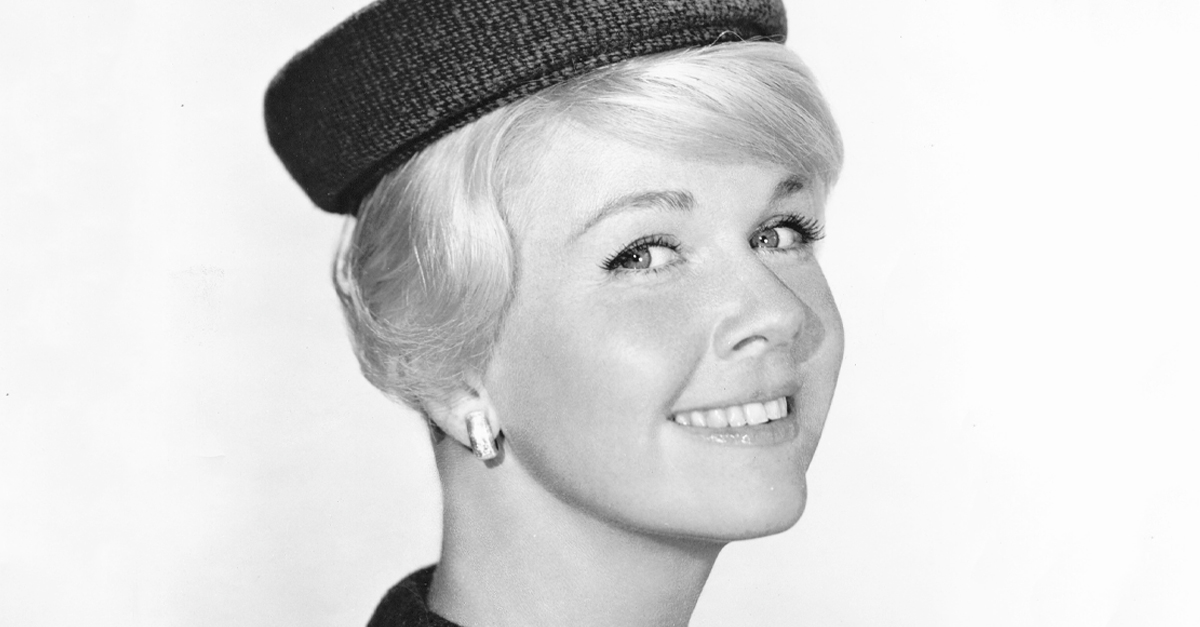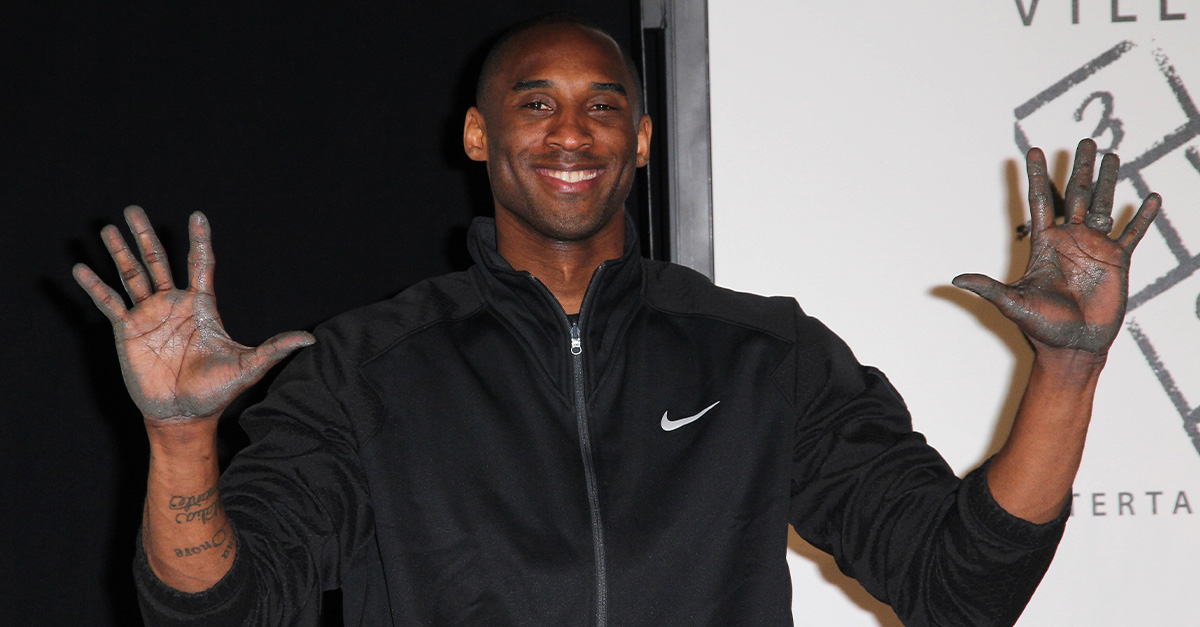She Was The All-American Girl—With A Secret Side
Doris Day was the wholesome, all-American sweetheart who topped the charts and graced the big screen for nearly 50 years. But her girl-next-door image hid a personal life filled with setbacks, scandals, and secrets.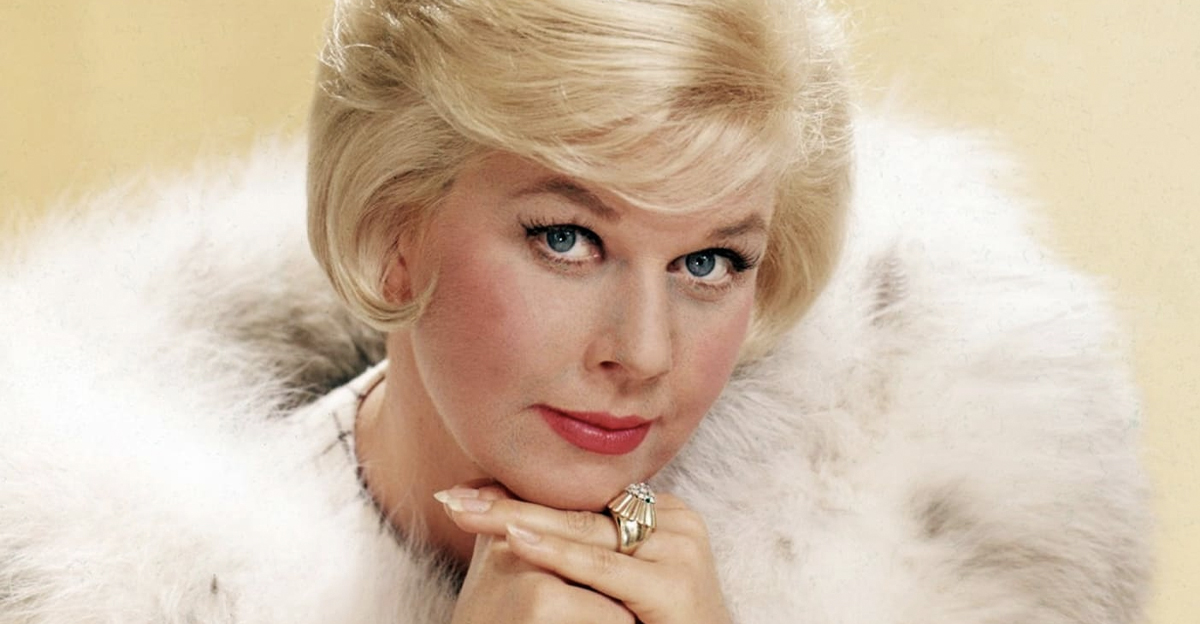
1. She Was Named After A Hollywood Legend
Born Doris Mary Kappelhoff on April 3, 1922, in Cincinnati’s Evanston neighborhood, Doris Day had grand expectations placed upon her. Her German-American parents named her after the silent film actress Doris Kenyon. By wild coincidence, Kenyon later became her Beverly Hills neighbor when Day wrote her autobiography in the mid-1970s.
She had music in her bones.
 Universal Pictures, Wikimedia Commons
Universal Pictures, Wikimedia Commons
2. Her Father Made Music
Day likely got her effortless musicality from her father, Wilhelm Joseph Kappelhoff. In addition to teaching music, he directed the church choir at St Mark’s Catholic, and played organ. Meanwhile, her mother, Alma, was a homemaker who came from bakery money—and her family owned a pretzel factory in Cincinnati.
Her childhood was not, however, cupcakes and frosting.
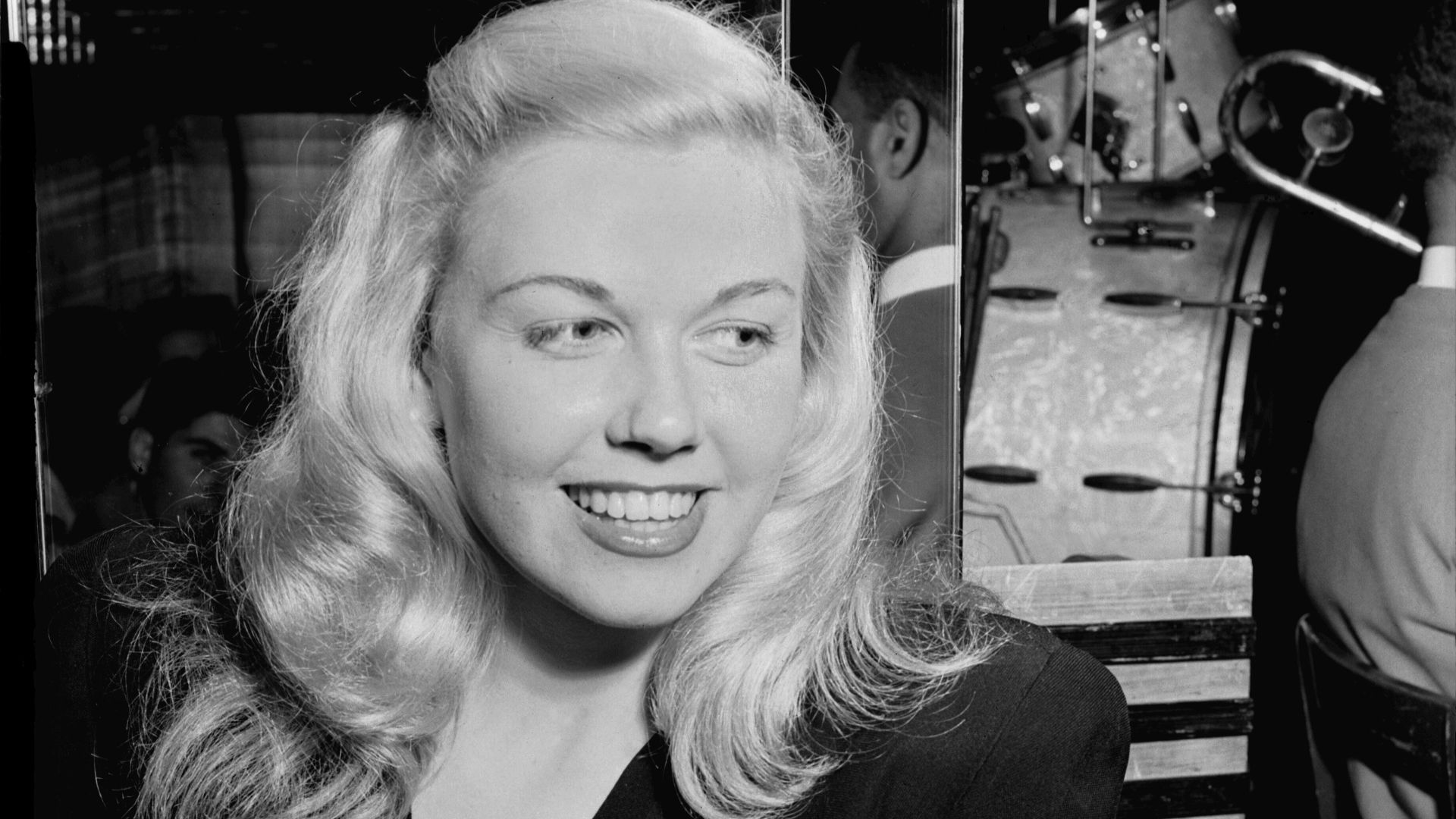 William P. Gottlieb, Wikimedia Commons
William P. Gottlieb, Wikimedia Commons
3. She Lost A Brother
Day had two older brothers, but tragedy had already marred her family by the time she was born. Richard, her eldest brother, passed on in 1919, and Paul, her other brother, passed on in 1957. To worsen matters, her father’s wandering eye caused her parents to split when she was just 10 years old in 1932.
She had to grow up too soon.
 Unknown authorUnknown author, Wikimedia Commons
Unknown authorUnknown author, Wikimedia Commons
4. She Lied About Her Age
Day always had the youthful look of the girl-next-door. Throughout her career, she claimed she was born in 1924. Warner Bros had fabricated this lie in 1947, believing that she could easily pull off being 23 instead of 25. Eventually, the Associated Press uncovered her birth certificate and revealed her real age.
By that time, she was already a star.
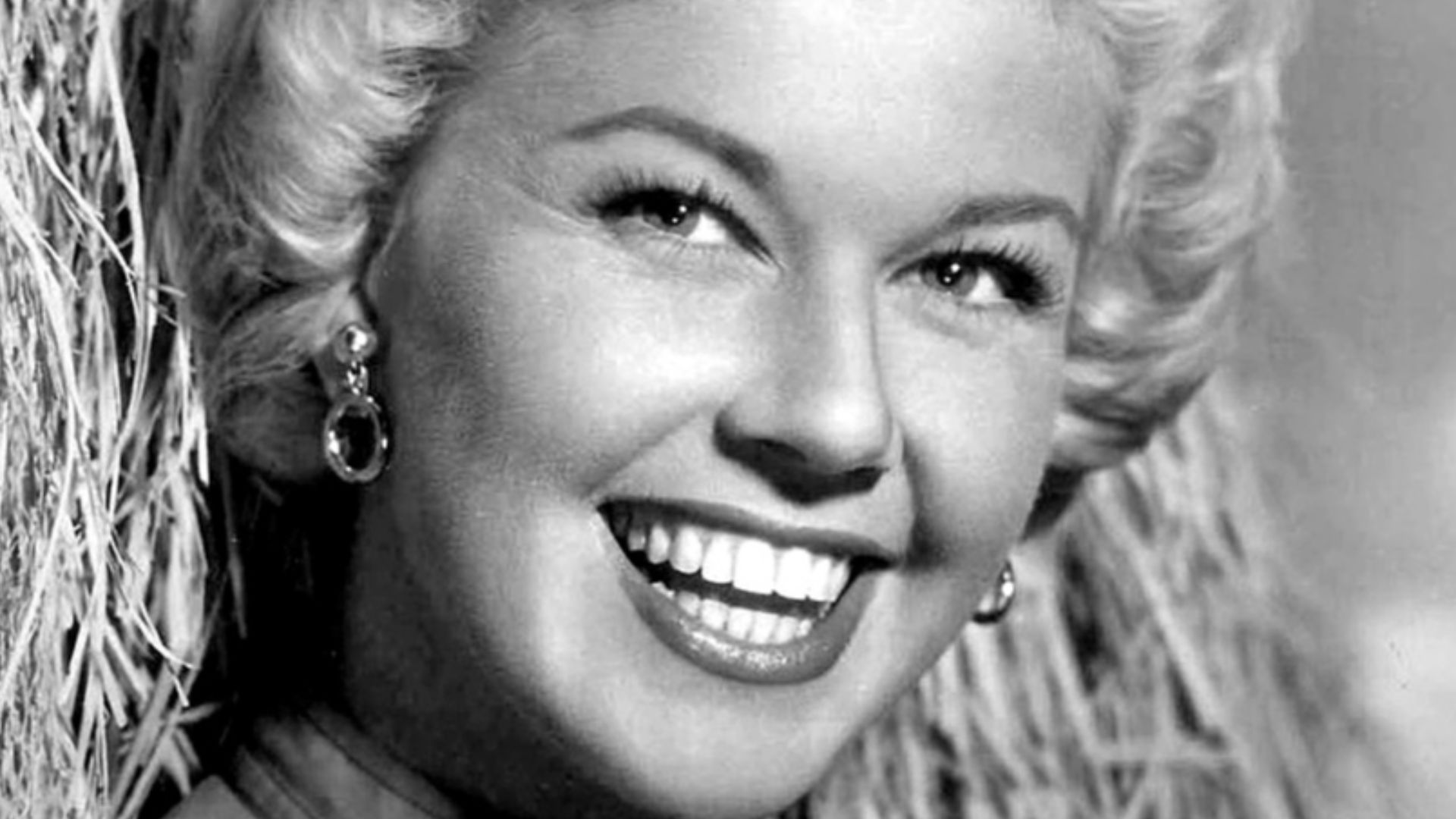 Unknown photographer, Wikimedia Commons
Unknown photographer, Wikimedia Commons
5. She Idolized Ginger Rogers
Young Day developed an early passion for dance, taking acrobatics and dance classes throughout her childhood. Her idol was Ginger Rogers. In a testament to her own stardom, she would eventually star alongside Rogers in 1950’s Storm Warning. For Day, dreams really did come true—albeit with a few nightmares.
 Studio publicity still, Wikimedia Commons
Studio publicity still, Wikimedia Commons
6. She Almost Made Hollywood Early
In the mid-1930s, determined to work in show business, Day formed “Doris and Jerry” with Jerry Doherty. Together, they performed at Cincinnati’s swankiest venues and, by 1937, they’d signed a five-year Hollywood contract and were ready to move to Los Angeles. Everything was perfectly lined up…that is, before fate dealt her a terrible accident.
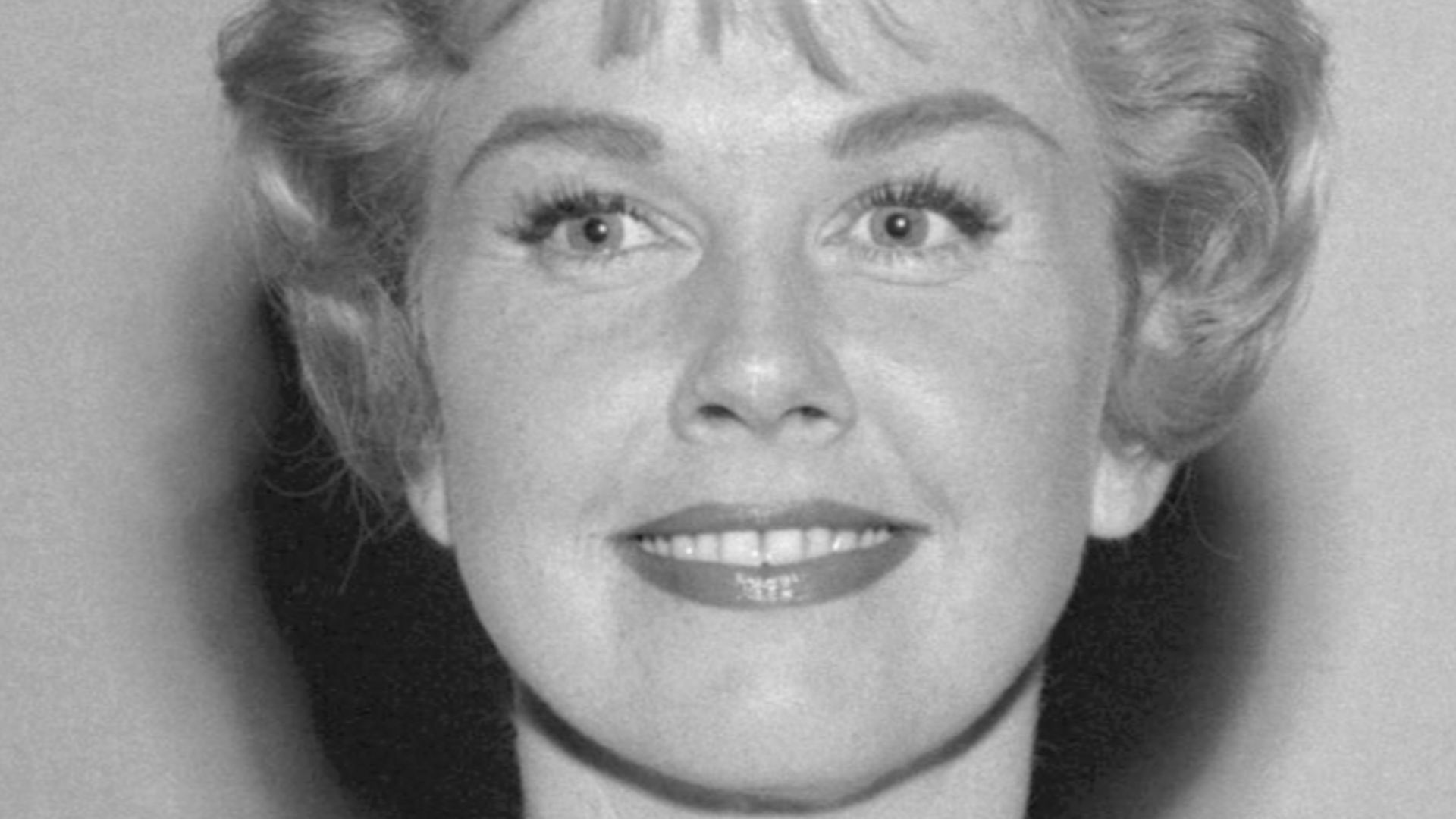 Los Angeles Times, Wikimedia Commons
Los Angeles Times, Wikimedia Commons
7. Her Dreams Literally Crashed
On October 13, 1937, Day’s dreams came to a crashing halt—literally. While heading to her going-away party in Hamilton, Ohio with her friends, the car she was in collided with a freight train around midnight. The accident broke her right leg and shattered her hopes of a dance career. Another tragedy sparked a lifelong passion.
 CBS Television, Wikimedia Commons
CBS Television, Wikimedia Commons
8. She Lost Her Dog
Day’s grievously injured leg required four months of bedrest plus over a year in a cast to fully mend. Worsening her already tragic situation, while she was recovering, her beloved dog Tiny was hit by a car, sparking her lifelong animal advocacy. At her lowest moment, however, she would discover her true purpose.
 Paramount Pictures, Wikimedia Commons
Paramount Pictures, Wikimedia Commons
9. Her Voice Saved Her
During her lengthy recovery, and in the sadness after losing her dog, Day sang along with the radio. Far from singing the blues, however, she discovered her lilting, graceful vocals. “I used to while away a lot of time listening to the radio,” she recalled, naming Ella Fitzgerald as the voice she “listened to above others”. Bed rest became boot camp.
 William P. Gottlieb, Wikimedia Commons
William P. Gottlieb, Wikimedia Commons
10. Her Mother Knew Talent
Alma, Day’s mother, spotted her daughter’s talent and arranged for her to have singing lessons with Grace Raine at WLW radio. After just three lessons, Raine declared Day had “tremendous potential”. Raine was so impressed, in fact, that she gave her three weekly lessons for the price of one. It wouldn’t take long for Doris Day to top the charts.
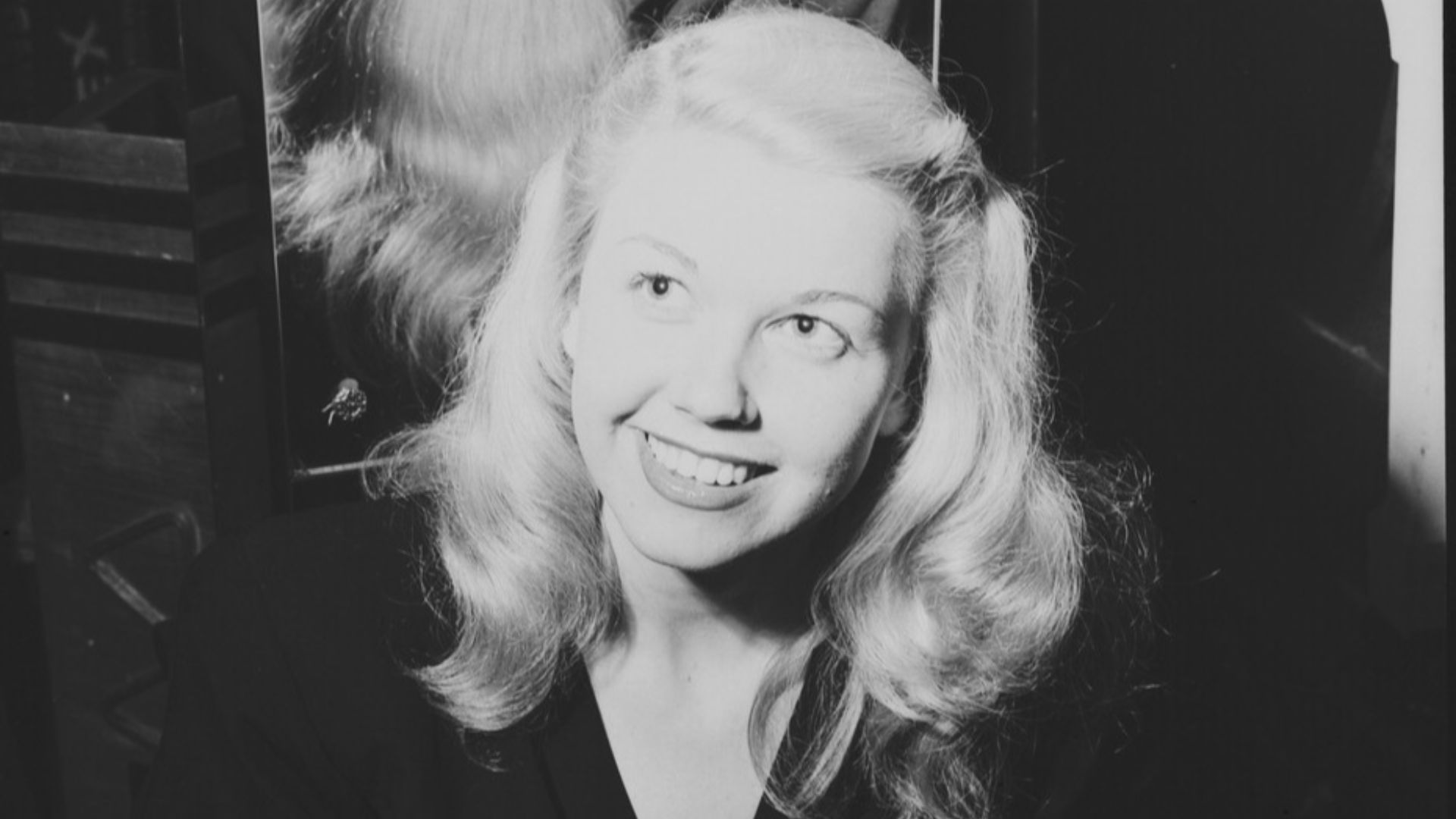 The Library of Congress, Wikimedia Commons
The Library of Congress, Wikimedia Commons
11. She Became A Professional Fast
Within a year of singing lessons, Day landed her first professional gigs on WLW’s Carlin's Carnival. Shortly after that, she was singing at Charlie Yee’s Shanghai Inn. From hospital bed to radio waves, Day was on a comeback tour that would catapult her to superstardom.
 Bert Six (1902-1967), see [1], Wikimedia Commons
Bert Six (1902-1967), see [1], Wikimedia Commons
12. She Caught Lightning
Day’s voice graced the radio, her vocals wafting through the airwaves like a spell. Before long, she caught bandleader Barney Rapp’s attention. He’d already auditioned about 200 singers for a female vocalist spot before hearing Day’s creamy voice on the radio. Without a moment’s hesitation, he asked Day to try out.
200 to one—those are star-making odds.
 Universal Pictures, Wikimedia Commons
Universal Pictures, Wikimedia Commons
13. She Got A Stage Name
Rapp was impressed with Day’s singing—but not her surname. So, in 1939, 17-year-old Doris Kappelhoff became Doris Day. Rapp explained that her actual surname was too lengthy to fit on a marquee, choosing the name “Day” because he loved her version of “Day After Day”. Doris, herself, initially worried that “Day” would make her sound like a burlesque performer.
But the name stuck.
 Rogers, Cowan, & Brenner-public relations, Beverly Hills., Wikimedia Commons
Rogers, Cowan, & Brenner-public relations, Beverly Hills., Wikimedia Commons
14. She Worked Her Way Up
Day earned as much as $25 a week working with Rapp at The Sign Of The Drum. But her star power was too great for just one band. She later performed with other big band stars such as Jimmy James, Bob Crosby, and Les Brown. Then she fell in with the worst company imaginable.
 Unknown photographer, Wikimedia Commons
Unknown photographer, Wikimedia Commons
15. She Married The Wrong Man
In March 1941, at just 19 years of age, Day married the trombonist Al Jorden, another member of Barney Rapp’s band. The pairing was a little odd as Day herself had previously thought of Jorden as a “creep”. Needless to say, her mother was not his number one fan. She should have trusted her instinct.
16. Her Marriage Turned Dark
Day’s original impression of Jorden had been right all along. The troubled trombonist suffered from schizophrenia and regularly laid his hands on Day—and not in a loving way. Once, when Day kissed another band member’s cheek, Jorden laid into her. Another time, her appearance on a magazine cover sent him into a rage.
It wasn't long before the warning signs became sirens.
 Screenshot from The Man Who Knew Too Much, Paramount Pictures (1956)
Screenshot from The Man Who Knew Too Much, Paramount Pictures (1956)
17. She Protected Her Baby
Despite her troubles with Jorden, Day became pregnant. But when Day refused to terminate, Jorden’s behavior escalated dangerously. Throughout her pregnancy, and even after their son arrived, she endured the unthinkable, shielding her pregnant belly and their infant son from possibly fatal beatings.
For a star, she was a fiercely protective mother.
 Screenshot from With Six You Get Eggroll, National General Pictures (1968)
Screenshot from With Six You Get Eggroll, National General Pictures (1968)
18. She Became A Mother
On February 8, 1942, when Day gave birth to her only child, Terrence Paul Jorden, her life changed forever. Her son, who would later go by the name Terry Melcher, would have a close encounter with one of Hollywood’s most infamous and brutal incidents: the Charles Manson slayings.
But first, Day had to escape a terror of her own.
 Screenshot from By the Light of the Silvery Moon, Warner Bros. (1953)
Screenshot from By the Light of the Silvery Moon, Warner Bros. (1953)
19. She Escaped Her Nightmare
After years of a troubled marriage, Day divorced Al Jorden in February 1943. Years later, tragically, Jorden took his own life with official records citing his low spirits following the public spectacle of their divorce. Fortunately for Day, she would find love again—and again, and again…and again.
 Screenshot from The Man Who Knew Too Much, Paramount Pictures (1956)
Screenshot from The Man Who Knew Too Much, Paramount Pictures (1956)
20. She Created Magic
In 1941, Day had recorded with Les Brown’s band. Her first recording, “Sentimental Journey”, hit the charts in early 1945 and reached the top spot on the Billboard charts faster than a jazz warble. The song hit a chord with servicemen on the frontlines of WWII who yearned to return home. There was no stopping Day now.
 See page for author, Wikimedia Commons
See page for author, Wikimedia Commons
21. She Was One Of The Greats
Day followed up “Sentimental Journey” with a flurry of other hits. Songs like “My Dreams Are Getting Better All the Time” and “You Won’t Be Satisfied (Until You Break My Heart)” dominated the charts, turning her into a household name. Les Brown himself put it best when he said, “As a singer Doris belongs in the company of Bing Crosby and Frank Sinatra”.
Her romantic life was also looking up.
22. Her Second Marriage Went South
In March 1946, Day said “I do” for the second time. This time, she married the saxophonist George William Weidler, the younger brother of actress Virginia Weidler. But behind the jazzman’s cool exterior lurked resentment—toward her son, her stardom, and his own wandering impulses. By 1949, the marriage imploded amid reports of infidelity and jealousy.
But they wouldn’t remain enemies forever.
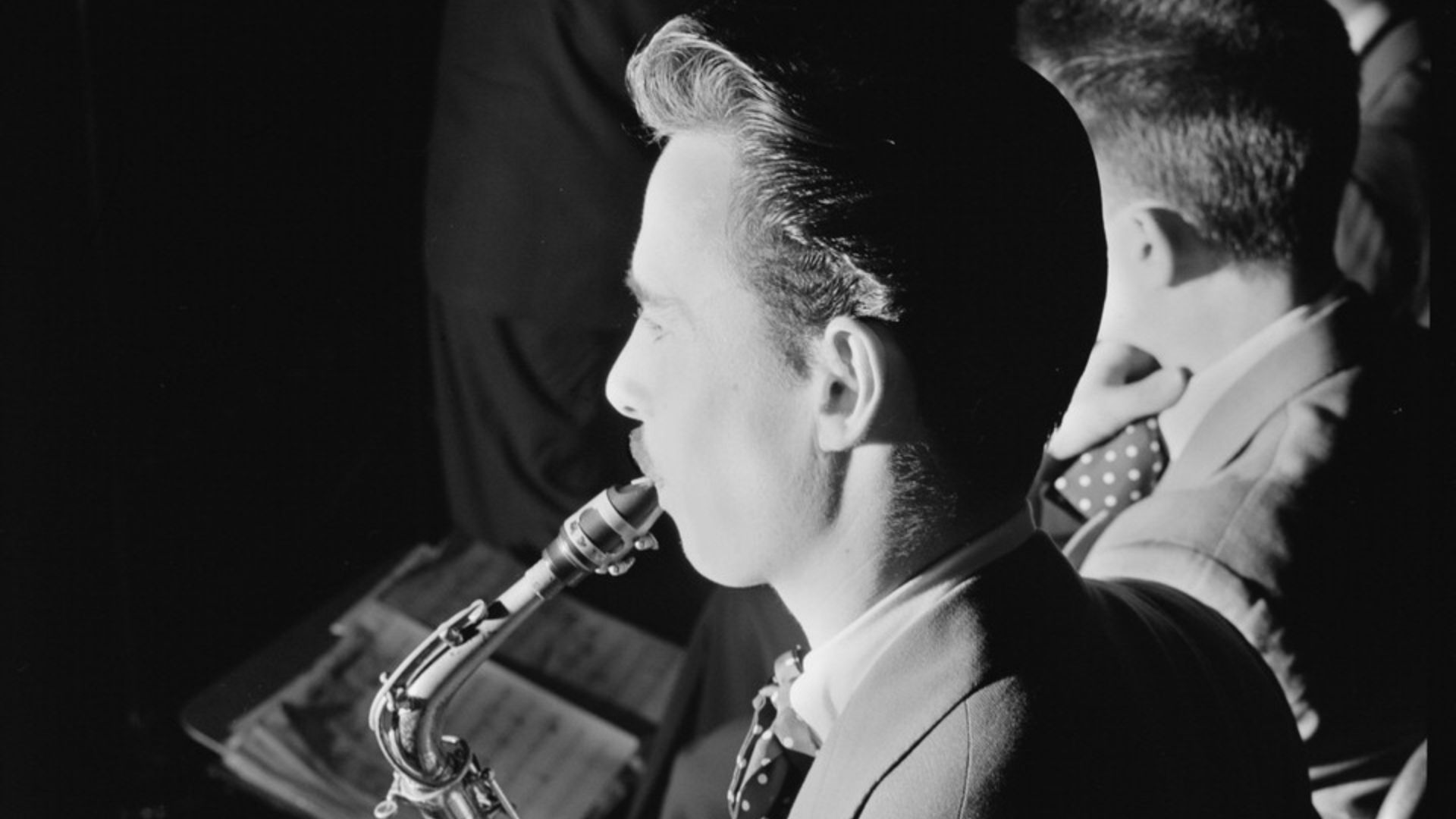 The Library of Congress, Wikimedia Commons
The Library of Congress, Wikimedia Commons
23. She Found Faith—And Science
Though their relationship ended badly, Weidler still left a lasting mark on Day. During a short-lived reconciliation years later, he discussed Christian Science with her—something that would become a significant part of her life. Even so, Day remained committed to focusing on her career. And it paid off big time.
 Screenshot from Romance on the High Seas, Warner Bros. (1948)
Screenshot from Romance on the High Seas, Warner Bros. (1948)
24. She Struck Out Solo
After leaving Les Brown’s band, Day launched a solo career that would see her record more than 650 songs in 20 years. Her rendition of “Embraceable You” wowed powerhouse songwriters Jule Styne and Sammy Cahn. The impression it left was so strong that they thought she'd be perfect for a film role in Romance on the High Seas.
Day nailed the audition for director Michael Curtiz. The rest would be history.
 Screenshot from Romance on the High Seas, Warner Bros. (1948)
Screenshot from Romance on the High Seas, Warner Bros. (1948)
25. She Was Hollywood’s “All-American Girl”
When Curtiz offered Day the film role, she was stunned. She nervously confessed that she was only a singer, with not a shred of real acting experience. Curtiz, however, saw past her doubts. He found her openness refreshing and thought “her freckles made her look like the All-American Girl”. With that, Day’s film career officially set sail.
 Screenshot from Romance on the High Seas, Warner Bros. (1948)
Screenshot from Romance on the High Seas, Warner Bros. (1948)
26. She Sang Magically
Romance on the High Seas didn’t just mark her screen debut—it also produced one of her most enduring hits. Her recording of “It’s Magic” soared to the second spot on the charts and even snagged an Academy Award nomination for Best Original Song. With her breakout role, Day became one of the few singers to successfully transition to the silver screen without missing a beat.
And she still dominated the airwaves.
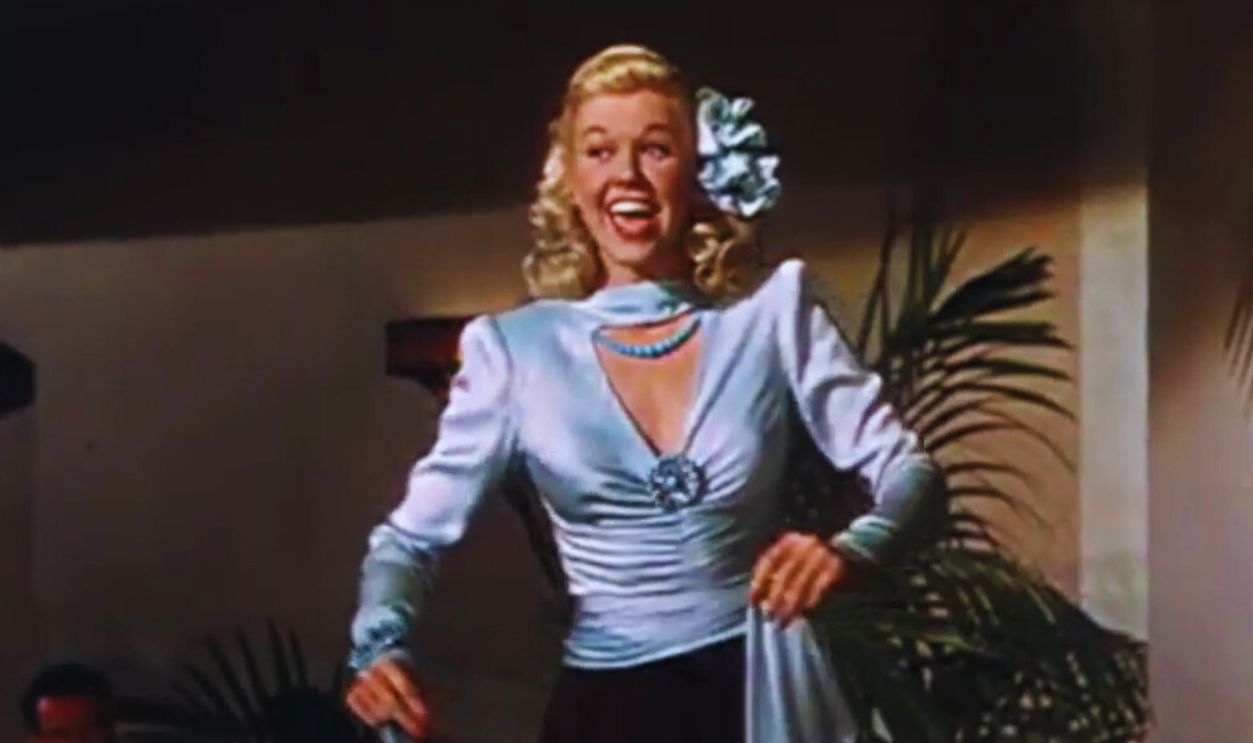 Screenshot from Romance on the High Seas, Warner Bros. (1948)
Screenshot from Romance on the High Seas, Warner Bros. (1948)
27. She Ruled The Airwaves
From 1948 to 1951, Day was unstoppable. She racked up 15 songs on Billboard’s Hot 30 list, staking her claim as one of the era’s top female pop vocalists. Rivals like Dinah Shore, Jo Stafford, and Patti Page may have been competition, but Day had carved out her own golden corner of American music.
If only her love life had as many hits…
 Screenshot from Romance on the High Seas, Warner Bros. (1948)
Screenshot from Romance on the High Seas, Warner Bros. (1948)
28. She Found Love (Again)
On her 29th birthday in 1951, Day walked down the aisle once more. This time, she married the film producer Martin Melcher. Unlike her previous husbands, Melcher embraced both her career and her son. He even formally adopted Terry, who thereafter went by Terry Melcher. For the first time, Day’s personal and professional lives seemed to be in harmony.
But how long could it last?
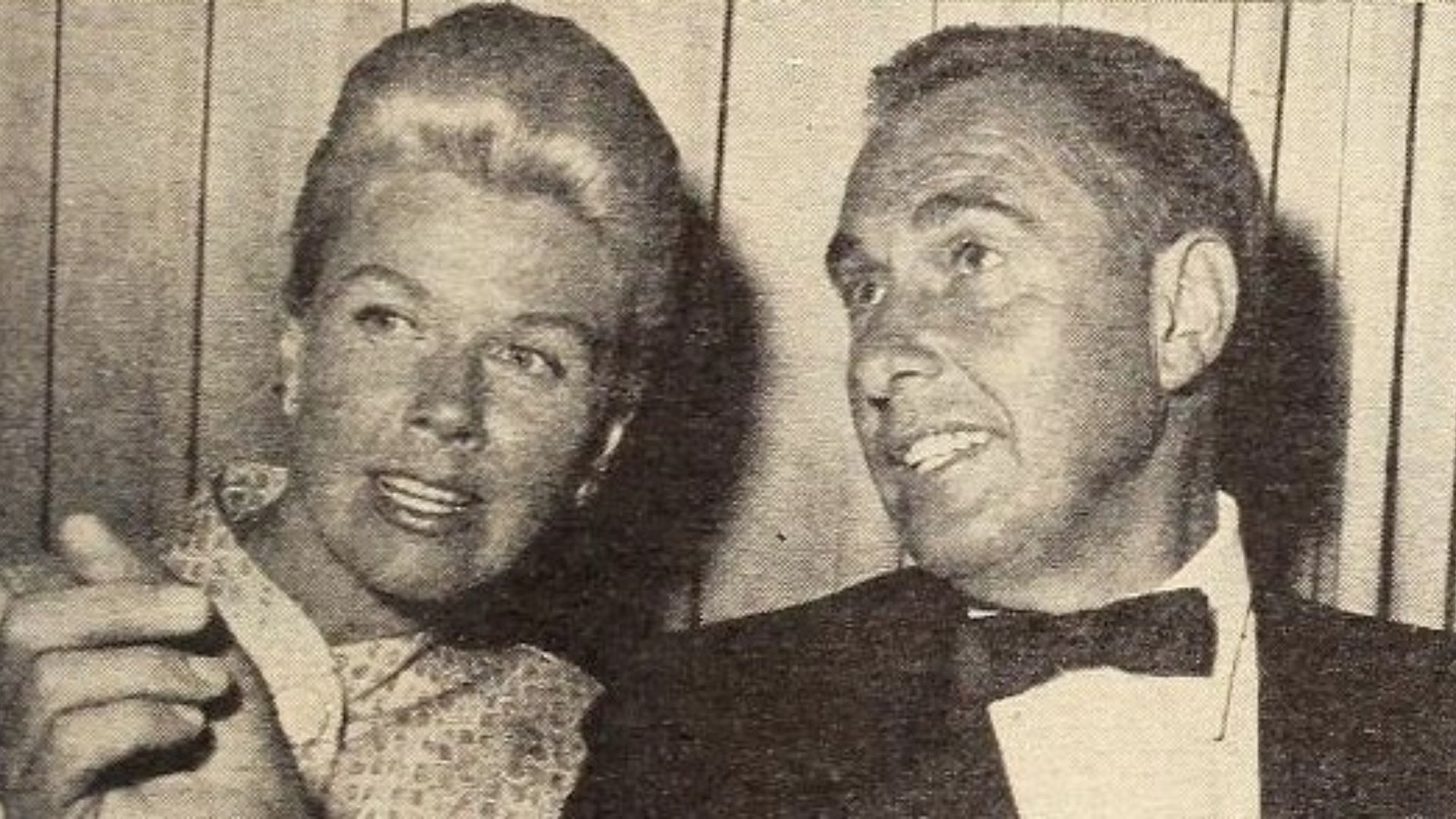 Dell Publishing, 1960. Photographer not credited, Wikimedia Commons
Dell Publishing, 1960. Photographer not credited, Wikimedia Commons
29. She Got Her Own Show
By 1952, Day was so beloved by American audiences that CBS gave her a microphone all to herself. The Doris Day Show, a radio program, brought her voice directly into American homes between 1952 and 1953. For fans who couldn’t get enough of her music—or her sunny persona—it was like having the delightful Doris Day in their living room every week.
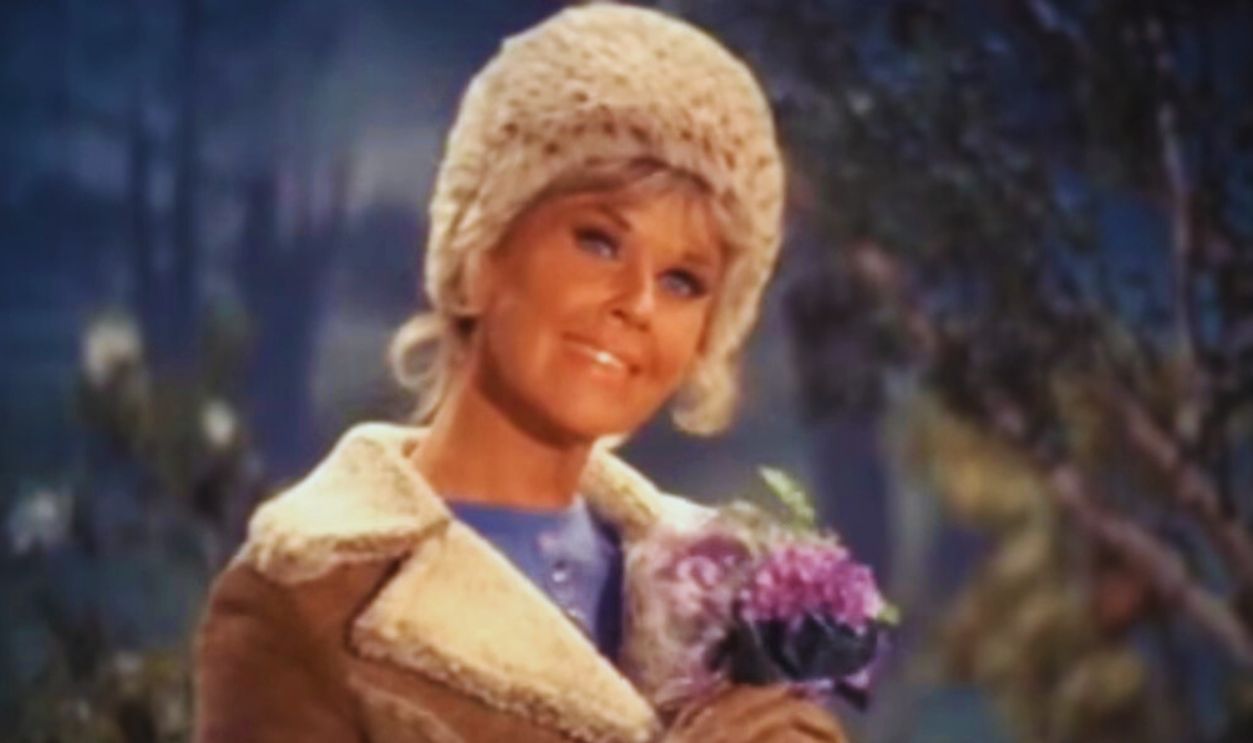 Screenshot from The Doris Day Show, CBS (1968)
Screenshot from The Doris Day Show, CBS (1968)
30. She Played Her Dream Role
In 1953, Day starred as the rough-and-tumble title character in Calamity Jane. The rollicking western musical became one of her most beloved films, and for good reason: Day herself said it was her personal favorite. “I was such a tomboy growing up, and she was such a fun character to play,” she later recalled. The fun she had was infectious.
 trailer screenshot (Warner Bros.), Wikimedia Commons
trailer screenshot (Warner Bros.), Wikimedia Commons
31. She Sang Her Secret Love
Calamity Jane didn’t just give Day her favorite role—it also gave her a signature ballad. “Secret Love” soared straight to the tippy top of the charts and won the Academy Award for Best Original Song. It was her fourth chart-topping single, and it sealed her reputation as a singer who could make moviegoers swoon with a single note.
And she wasn’t done impressing audiences yet.
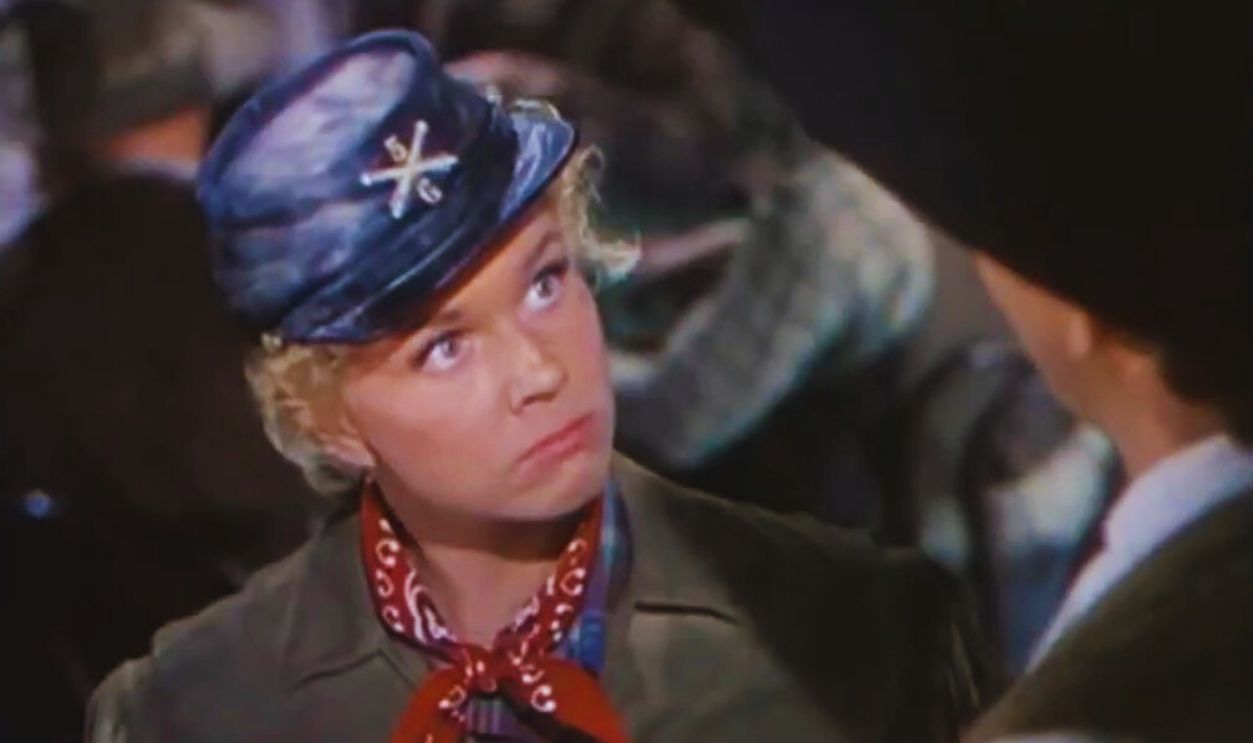 Screenshot from Calamity Jane, Warner Bros. (1953)
Screenshot from Calamity Jane, Warner Bros. (1953)
32. She Proved She Could Act
In 1955, Day shocked critics and fans by stepping out of her sunny persona to play real-life torch singer Ruth Etting in Love Me or Leave Me. Sharing the screen with James Cagney, Day delivered a raw, riveting performance that critics hailed as her best work. For the first time, she wasn’t just a singer who acted—she was a bona fide dramatic actress.
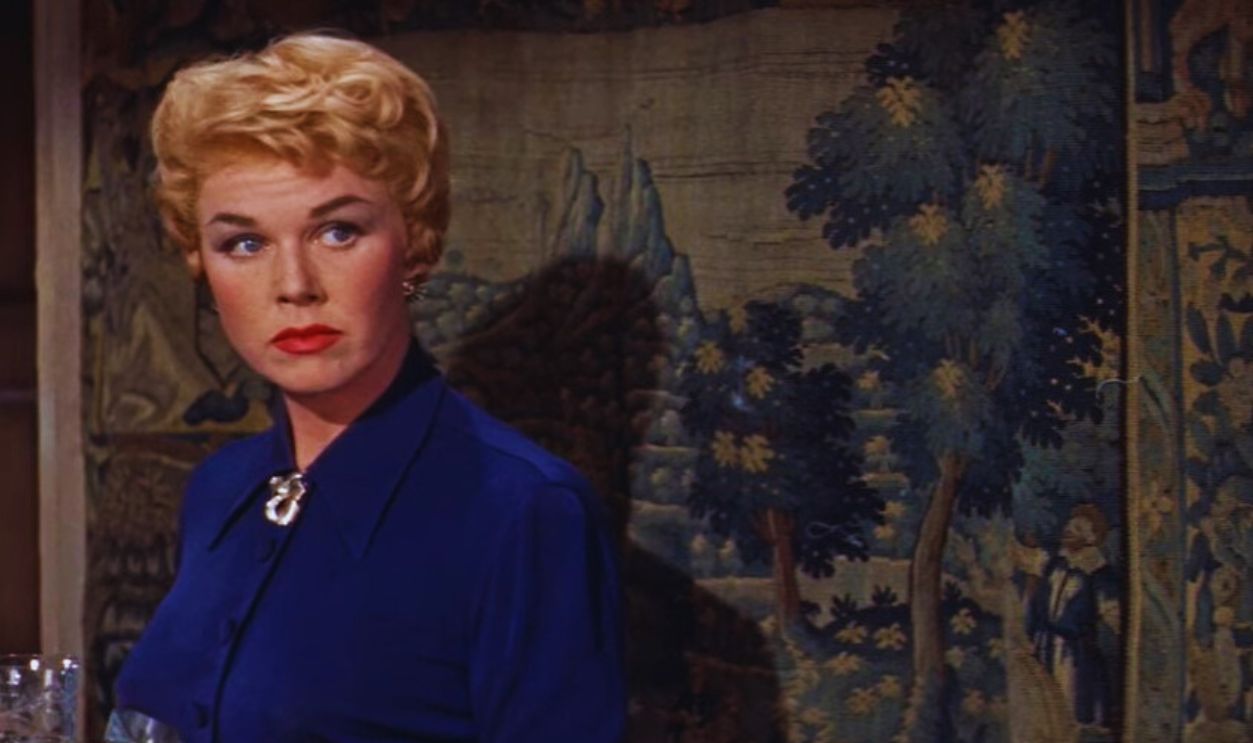 Screenshot from Love Me or Leave Me, Metro-Goldwyn-Mayer (1955)
Screenshot from Love Me or Leave Me, Metro-Goldwyn-Mayer (1955)
33. She Was “Simple” and “Direct”
The American actor and dancer James Cagney, never one to throw around empty praise, had nothing but praise for Day. Cagney said she had “the ability to project the simple, direct statement of a simple, direct idea without cluttering it”. He compared her work in Love Me or Leave Me to Laurette Taylor’s legendary performance in The Glass Menagerie.
Still, her voice was her real talent.
 Warner Bros. Studio (work for hire), Wikimedia Commons
Warner Bros. Studio (work for hire), Wikimedia Commons
34. She Said “Whatever Will Be, Will Be”
Day teamed up with Alfred Hitchcock in 1956’s The Man Who Knew Too Much opposite James Stewart. While her performance was, once again, memorable, it was her song that would live on forever. The film included one of cinema’s most iconic songs, “Que Sera, Sera (Whatever Will Be, Will Be)”. The tune won the Oscar for Best Original Song and became her lifelong calling card.
Her true purpose in life, however, had nothing to do with Hollywood.
 Screenshot from The Man Who Knew Too Much, Paramount Pictures (1956)
Screenshot from The Man Who Knew Too Much, Paramount Pictures (1956)
35. She Stood Up for Animals
While filming The Man Who Knew Too Much, Day noticed animals in a Moroccan marketplace being neglected. Outraged, she threatened to stop production unless the crew cared for them properly. Following her instructions, the crew fed and cared for the animals. But, more importantly, the incident sparked her lifelong crusade against animal cruelty.
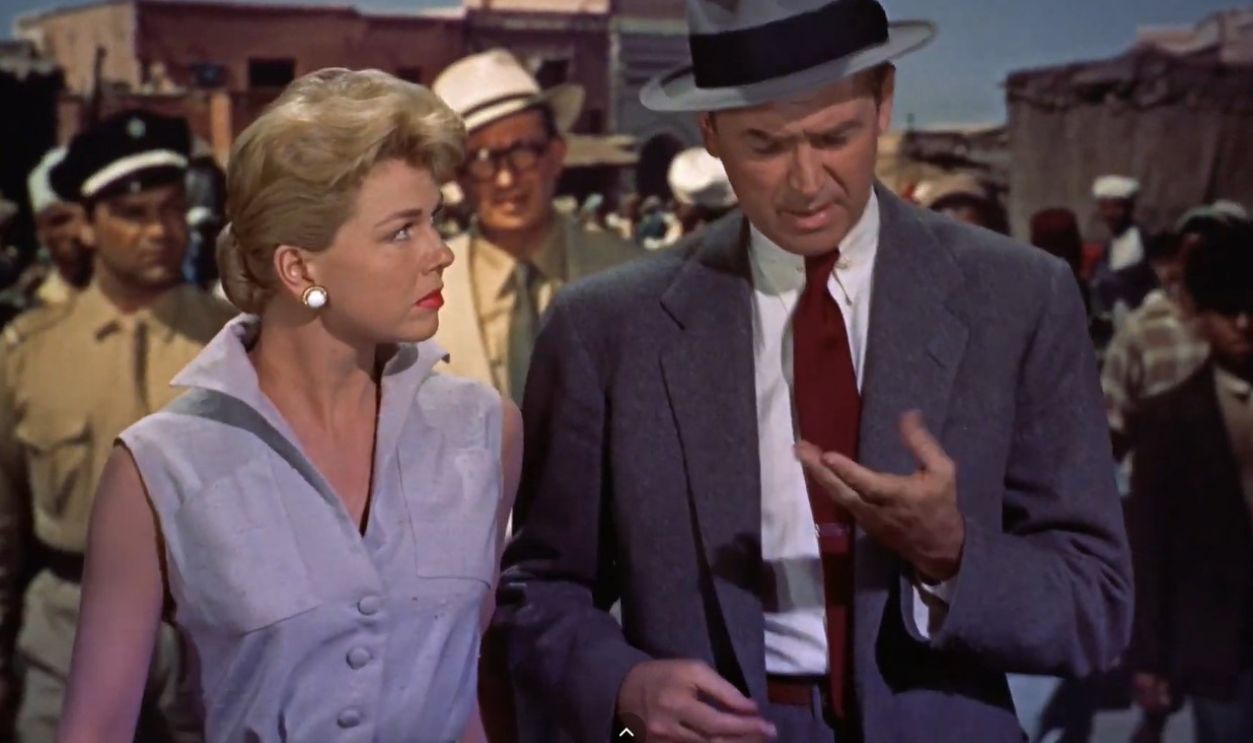 Screenshot from The Man Who Knew Too Much, Paramount Pictures (1956)
Screenshot from The Man Who Knew Too Much, Paramount Pictures (1956)
36. She Survived A Health Scare
While shooting the thriller Julie in 1956, Day faced a terrifying ordeal off-camera. Doctors discovered a grapefruit-sized tumor growing into her intestines, forcing her to undergo a hysterectomy mid-production. She returned to set and finished the film, proving that Day’s resilience was as legendary as her voice.
 Screenshot from Julie, Metro-Goldwyn-Mayer (1956)
Screenshot from Julie, Metro-Goldwyn-Mayer (1956)
37. She Topped the Charts—Again And Again
If there was ever any doubt about Day’s dominance, Billboard’s annual poll of disc jockeys erased it. From 1949 through 1958, America’s disc jockeys voted Day the top female vocalist nine times out of 10. Year after year, DJs spun Day more than any other woman, cementing her as the all-American female vocalist.
 Screenshot from Julie, Metro-Goldwyn-Mayer (1956)
Screenshot from Julie, Metro-Goldwyn-Mayer (1956)
38. She Found Her Perfect Comedy Match
Day’s career reached dazzling new heights in 1959 with Pillow Talk, her first collaboration with the dreamy Rock Hudson. The sparkling romantic comedy earned her an Academy Award nomination for Best Actress—her only one. Off-screen, Hudson had his own nickname for her: “Eunice,” because the thought of her as Eunice made him laugh.
Her reign at the box office was almost as complete as her reign over the airwaves.
 Screenshot from Pillow Talk, Universal-International (1959)
Screenshot from Pillow Talk, Universal-International (1959)
39. She Ruled The Box Office
From 1960 through 1964, Day wasn’t just the top female vocalist. She was also the top draw at the box office in America. Biographer David A Kaufman put it plainly: “Doris Day is, to this day, the number one female box office star of all time”. Forget girl-next-door—Doris Day was Hollywood’s golden goose.
She was almost America’s first lady, too…
 Screenshot from Pillow Talk, Universal-International (1959)
Screenshot from Pillow Talk, Universal-International (1959)
40. She Dated The Future President
Long before he entered politics, Ronald Reagan was just another actor under contract at Warner Bros. Following his divorce from Jane Wyman, he briefly dated Day, his co-star in Storm Warning and The Winning Team. Day reportedly told him he was such a natural talker that he ought to travel the country making speeches. He took her advice all the way to the White House.
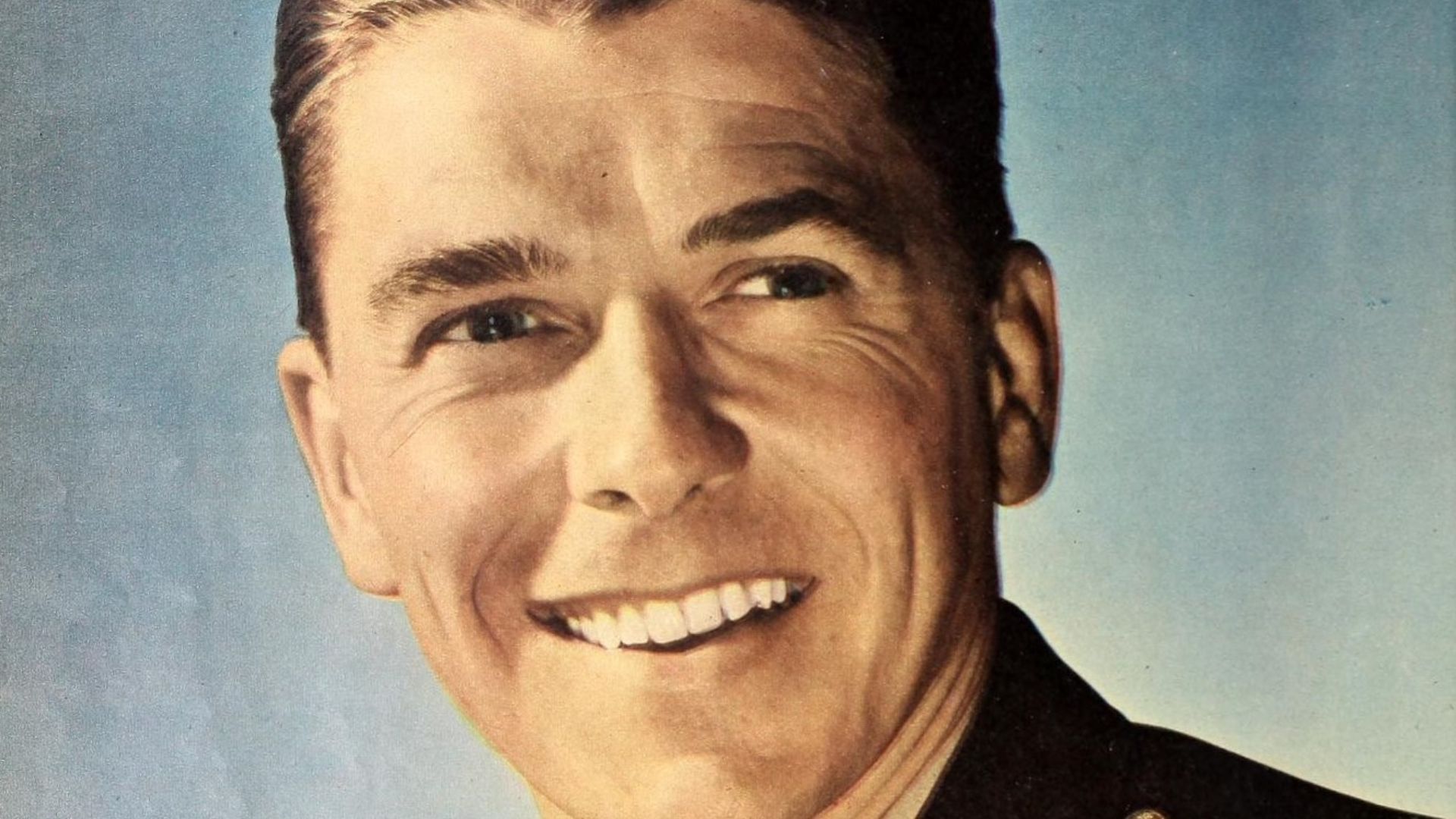 Unknown photographer, Wikimedia Commons
Unknown photographer, Wikimedia Commons
41. She Lost Out On Iconic Roles
Day’s husband and manager, Martin Melcher, was fiercely protective of her image. Sometimes, though, that protection cost her. Melcher turned down plum parts like Mrs. Robinson in The Graduate, fearing the role would tarnish her wholesome reputation. Day herself declined the chance to play Maria in The Sound of Music, saying, “I’m too American to play a nun from Austria”.
Hollywood missed a chance, but Day stayed true to herself.
 Screenshot from The Sound of Music, 20th Century Fox (1965)
Screenshot from The Sound of Music, 20th Century Fox (1965)
42. She Saved Her Son From Manson
In early 1969, Day’s maternal instincts may have saved her son Terry Melcher’s life. After hearing of Charles Manson’s dangerous antics and unsettling followers, she urged Terry to move out of the infamous Cielo Drive home. Seven months later, the house became the scene of the horrific Tate slayings. Her warning had spared him a grisly fate.
She got little thanks for her vigilance.
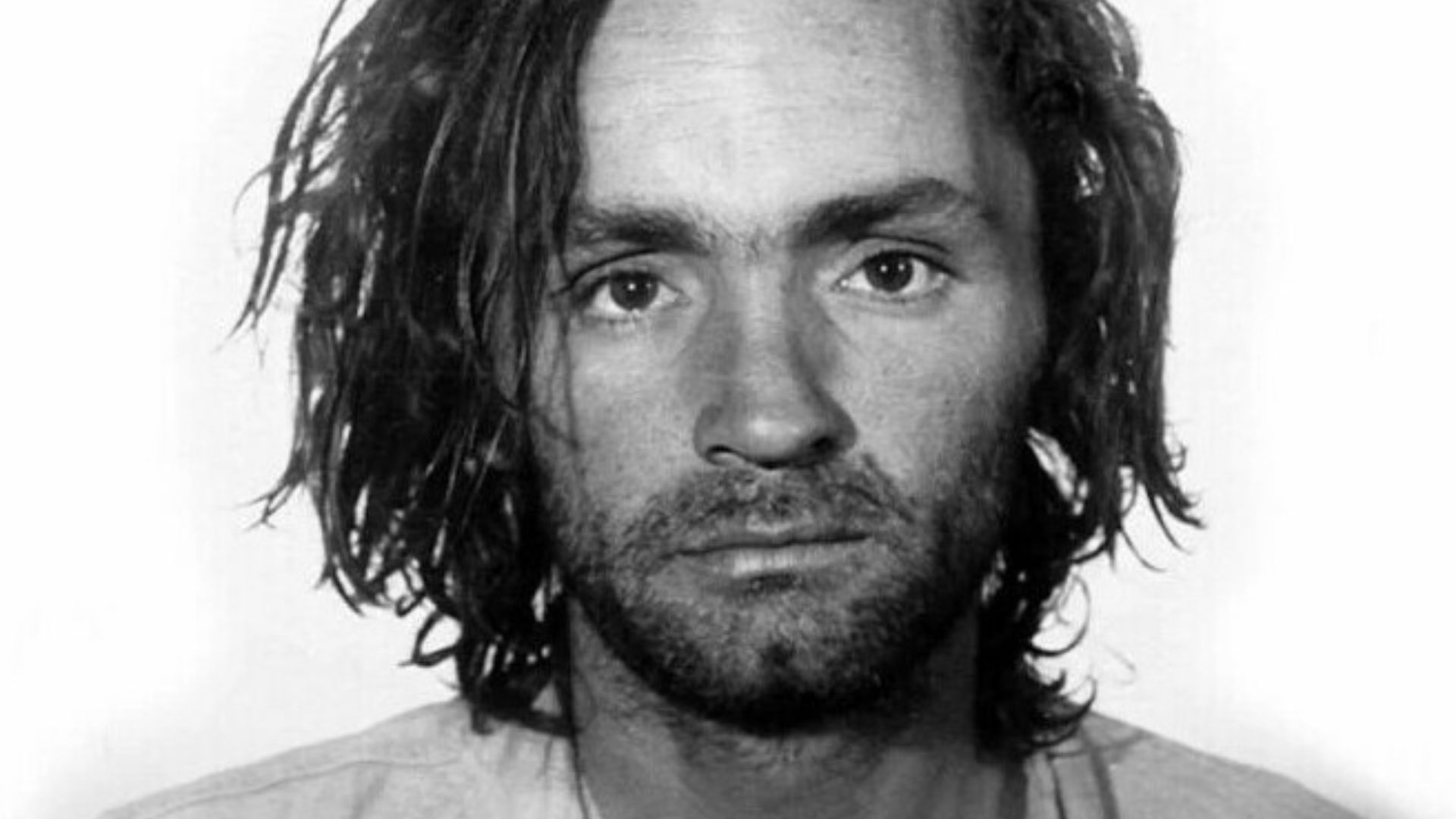 State of California, San Quentin Prison, Wikimedia Commons
State of California, San Quentin Prison, Wikimedia Commons
43. She Was Left With Nothing
On April 20, 1968, Day's husband Melcher suddenly passed on—and left behind more than grief. Day discovered that he and his business partner Jerome Rosenthal had squandered her fortune. Instead of the $23 million she expected, Melcher left her with $400,000…in debt. For America’s sweetheart, it was a devastating betrayal.
 Screenshot from Pillow Talk, Universal-International (1959)
Screenshot from Pillow Talk, Universal-International (1959)
44. She Was Forced Into Television
Day’s woes didn’t end with debt. To her horror, she learned that Melcher had secretly signed her to star in a TV series. “It was awful,” she recalled, “I was really, really not very well when Marty passed away, and the thought of going into TV was overpowering. But he’d signed me up for a series”. With no way out, Day carried on.
 Screenshot from Pillow Talk, Universal-International (1959)
Screenshot from Pillow Talk, Universal-International (1959)
45. She Got What Was Hers
Determined to reclaim her life, Day sued Jerome Rosenthal for fraud and malpractice. In 1974, she won a jaw-dropping $22.8 million judgment, though the case dragged on until 1979. In the end, she settled with insurers for about $6 million. It wasn’t the full amount—but it was a hard-earned victory.
 Screenshot from Ten Cents a Dance, Columbia Pictures (1931)
Screenshot from Ten Cents a Dance, Columbia Pictures (1931)
46. She Sang On The Small Screen
To earn her fortune back, Day turned to the only person she could rely on: herself. The Doris Day Show premiered on September 24, 1968, and ran until 1973. Featuring a rerecorded version of “Que Sera, Sera” as its theme song, the series helped Day climb out of debt and pay her legal bills. What began as an unwanted commitment became a lifeline.
 Screenshot from The Doris Day Show, CBS (1968)
Screenshot from The Doris Day Show, CBS (1968)
47. She Married Again—For The Last Time
In 1976, Day wed Barry Comden, the head waiter at her preferred restaurant, who won her heart over with a bag of leftover meat scraps for her dogs. But by 1982, the romance had soured. Comden claimed she loved her “animal friends” more than him, and the couple went their separate ways. For Day, men came and went, but animals were forever.
So she dedicated her life to them.
 Screenshot from The Doris Day Show, CBS (1968)
Screenshot from The Doris Day Show, CBS (1968)
48. She Became An Animal Activist
In 1978, Day turned her compassion into a cause by co-founding the Doris Day Animal League. The organization, later merged with the Humane Society, fought for spaying, neutering, and ending cruelty. Suddenly, the spotlight seemed too bright to step back into.
 Screenshot from The Doris Day Show, CBS (1968)
Screenshot from The Doris Day Show, CBS (1968)
49. She Chose Seclusion
By 1987, Day had stepped away from Hollywood entirely, retreating to Carmel Valley, California. There, she cared for her beloved rescue dogs and rarely gave interviews, protecting her life story like a caged animal. America’s most famous sweetheart had become its most famous recluse.
But not even living a quiet life could save her from heartache.
 Screenshot from The Doris Day Show, CBS (1968)
Screenshot from The Doris Day Show, CBS (1968)
50. She Lost Her Son
In 2004, tragedy struck someone very close to her—her son, Terry. Sadly, Terry had been diagnosed with melanoma, and he succumbed to the illness at the age of 62. In the midst of her private grieving, though, it was clear that her fans never forgot about her.
 Screenshot from The Doris Day Show, CBS (1968)
Screenshot from The Doris Day Show, CBS (1968)
51. She Earned America’s Highest Honor
The same year Day lost her son, President George W Bush awarded her the Presidential Medal of Freedom. The honor recognized both her dazzling career and her tireless animal activism. In fact, she racked up awards and accolades faster than rescue animals.
52. She Collected Lifetime Awards
Day’s mantle groaned with accolades. She received the Grammy Lifetime Achievement Award in 2008, the Cecil B DeMille Award at the 1989 Golden Globes, and two stars on the Hollywood Walk of Fame—one for film, one for television. More than 600 songs, nearly 40 movies, and countless hearts later, Doris Day had done it all.
 Screenshot from It Happened to Jane, Columbia Pictures (1959)
Screenshot from It Happened to Jane, Columbia Pictures (1959)
53. She Said Goodbye At 97
On May 13, 2019, Doris Day passed on at her Carmel Valley home after a short illness. The cause was pneumonia. True to her lifelong Catholic faith, she was cremated following private rites. At 97, she left the world with a simple farewell: que sera, sera.
 Screenshot from The Man Who Knew Too Much, Paramount Pictures (1956)
Screenshot from The Man Who Knew Too Much, Paramount Pictures (1956)
You May Also Like:
Rebecca Schaeffer’s Story Is Proof That Kindness Can Kill
Coco Chanel’s Secret Double Life

